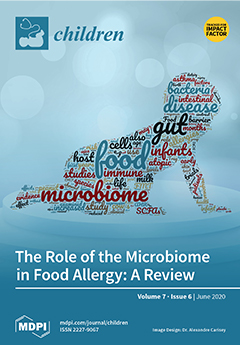This study evaluated the effect of action observation training on spasticity, gross motor function, and balance in children with spastic diplegia cerebral palsy. Eighteen children with cerebral palsy participated in this study. The participants were randomized into the action observation training group (
[...] Read more.
This study evaluated the effect of action observation training on spasticity, gross motor function, and balance in children with spastic diplegia cerebral palsy. Eighteen children with cerebral palsy participated in this study. The participants were randomized into the action observation training group (
n = 9) and a control group (
n = 9). The action observation training group repeatedly practiced the action with their motor skills, while the control group practiced conventional physical therapy. Both groups received 30 min sessions, 3 days a week, for 6 weeks. To confirm the effects of intervention, the spasticity, gross motor function measurement (GMFM), and pediatric reaching test (PRT) were evaluated. The results showed that in the plantar flexor contracture test of both sides, the Modified Tardieu Scale (MTS) of the right side of knee joints, GMFM-B, C, and D were significantly increased between pre- and post-intervention within both groups (
p < 0.05). PRT was significantly increased between pre- and post-intervention within the both groups (
p < 0.05), and there was a significant difference between the two groups (
p < 0.05). These results suggest that action observation training is both feasible and beneficial for improving spasticity, gross motor function, and balance in children with spastic diplegia cerebral palsy.
Full article






